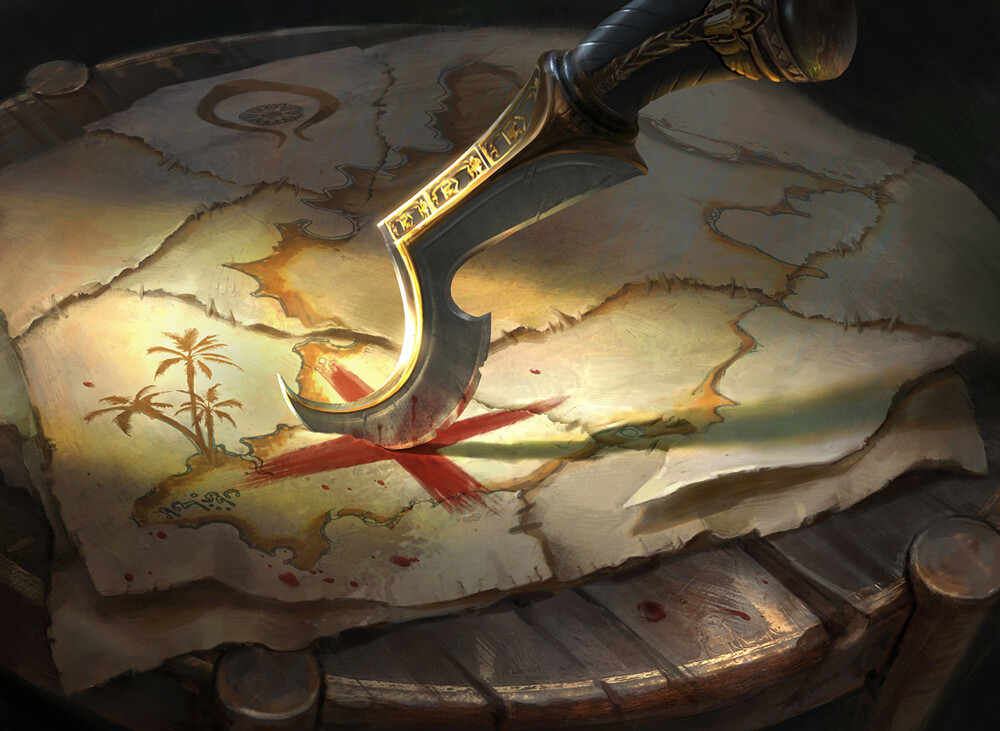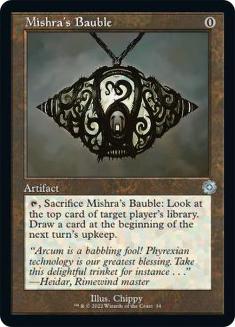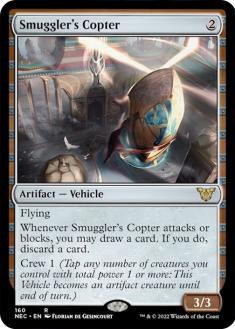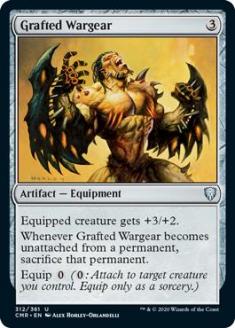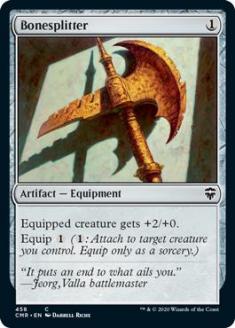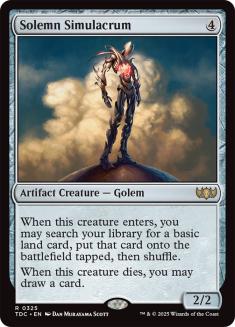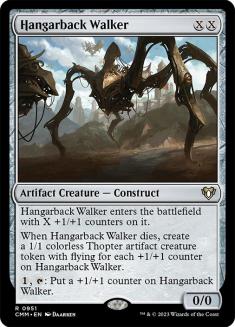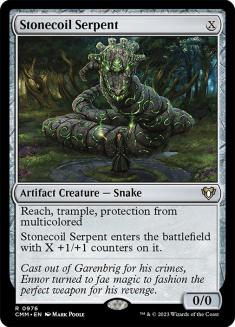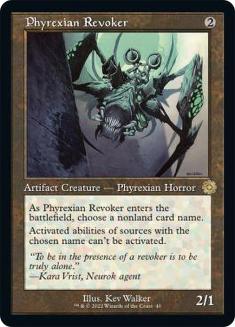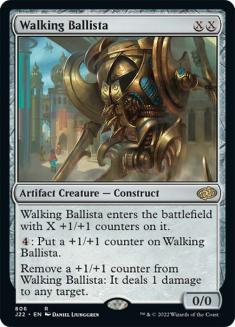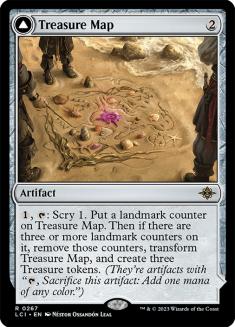We’re on the home stretch in my series on the most Cubeable cards in Magic! I went over gold last week, which leaves only the two colorless columns, those being colorless spells and lands. Today I’ll be covering colorless spells, which I usually refer to as “the artifact section” when I do my Cube breakdowns. These sections mostly consist of artifacts, though we do commonly see some Eldrazi and other oddballs in this column.
Any colorless spell was a consideration for my picks today, though (SPOILER) my list consists of ten artifacts. Emrakul and friends really only work in Cubes with cards that allow you to cheat giant creatures into play, and these strategies tend to only be appropriate for the most powerful Cubes. I also stopped being into Ulamog’s Crusher in Pauper Cube years ago. There’s a Pauper hit in the spread today, and plenty of Vintage Cubeable cards, but recall that I’m looking for cards that work in a wide range of power levels.
The colorless columns heavily impact how players will approach drafting your Cube. You’ll often see it cited as conventional draft wisdom that biasing towards “staying open” and being able to draft whatever you’re passed tends to lead to solid decks. The more generically powerful your colorless columns, the more you’ll reward players for taking this approach. I think that Magic players are far too afraid of commitment as is, and I prefer a design that tempers the power of colorless options so as not to expressly reward players who make safe decisions. What I mostly mean here is that I try to avoid including colorless spells that are near the power ceiling of the Cube in anything but the most powerful Cubes.
Many readers have no doubt figured out that I’m saying mana rocks score low on my metrics for this list. I expressed similar sentiments in my article on green. If you’re not careful with fast mana, some games will be about little more than who made more mana faster. It’s a happy drafter who sees a Signet floating in an otherwise unexciting pack. It’s a happy table that plays games that are about more than just casting the most powerful spells in your hand as fast as you can.
Abstract thoughts on curating colorless columns aside, let’s take a look at my picks for the ten most Cubeable colorless spells in Magic:
10. Mishra’s Bauble
We don’t tend to see Mishra’s Bauble in the digital Cubes. An oddball from Coldsnap that brings with it the baggage of a slow-trip, Mishra’s Bauble is a card that anybody can play in a pinch that also supports a number of archetypes well. Zero mana artifacts obviously have applications for many artifact-centric archetypes, but there’s plenty more going on here as evidenced by the card’s Constructed resumé.
Mishra’s Bauble is a staple in any Cube supporting cards with delirium and/or Lurrus of the Dream-Den, and it carries its weight well with the odd revolt and threshold card as well. It’s also a solid card for prowess decks, especially if you want players to take Monastery Mentor seriously. The trick of looking at the top card of your deck before deciding to crack a fetchland is also a classic.
Mishra’s Bauble is a bit more specific than a lot of my entries in this series, but the card supports a fairly wide range of things and exemplifies what I like in a colorless spell very well. Anybody can play it, but you’ll get a lot more mileage out of the card if you have a specific plan.
9. Smuggler’s Copter
Smuggler’s Copter is the most powerful card on my list today, which is somewhat evidenced by the bans that the card caught in Standard and Pioneer. Smuggler’s Copter will be ill-fit in any Cube that doesn’t have powerful removal options, but it’s a very fun card to play with assuming that it’s not too difficult to remove and it’s just bigger than the creatures in your Cube.
If you are concerned that the aggressive decks in your Cube are struggling, Smuggler’s Copter is among the individual cards that you can add that will improve their position the most. Being playable in any deck but only desirable in decks playing enough creatures to reliably crew it means that an aggressive player will generally end up with the Copter in their deck, and the power, evasion, and card selection that the card offers tends to give any aggressive deck a real shot in the arm.
Smuggler’s Copter also provides powerful support to graveyard-centric strategies as well as madness, though the more obscure an archetype you’re trying to support the more you do have to be aware of the card’s power level. Smuggler’s Copter is a relatively high pick in Vintage Cube for aggressively inclined players, and the lower the power level of the Cube the higher a pick the card becomes. This runs a bit counter to the reasons that I praised Mishra’s Bauble, with the relevant upside of the card being that it does at least pressure players to play aggressive decks.
8. Grafted Wargear
When it comes to equipment, it’s hard to ignore the popularity of the Sword of Fire and Ice cycle. When it comes to gameplay, it’s hard to praise those cards. Some of the worst games of Cube you can play are the ones decided by protection from abilities, and those cards always get some special attention from me when I do my overviews of the digital Cubes. Grafted Wargear, on the other hand, packs a punch that’s well worth the price of admission without being overbearing.
The zero equip cost allows Grafted Wargear to efficiently come down and change the texture of combat, and the card’s drawback adds some risk to the equation. You know I love tension, gamers. Beyond that, Grafted Wargear offers sort of a makeshift sacrifice outlet as you reequip the card, which makes it more than just a generic beatdown card.
Grafted Wargear is a bit weak for high powered Cubes where you’ll want to stick with Umezawa’s Jittes and Swords if you run any equipment at all, but it’s a very fun option for lower-power and Peasant Cubes. Especially ones supporting a Sacrifice archetype.
7. Bonesplitter
Bonesplitter is all beatdowns all the time which means it offers a little less utility than Grafted Wargear, but at common it’s an option for even Pauper Cubes. While it’s not really a support card for Sacrifice decks, Bonesplitter does carry a lot of weight in token decks. Some of the balance in Pauper and other low power Cubes revolves around wide battlefields of 1/1s squaring off against creatures with two or more toughness. Bonesplitter gives the player going wide the option to get busy attacking.
I consider Bonesplitter to be a staple for Pauper Cubes, and a very nice addition to most Cubes with a heavy focus on combat. There are fancier and more powerful options for equipment for many environments, but in general you can’t go too wrong with an old reliable Bonesplitter.
6. Solemn Simulacrum
Solemn Simulacrum is currently serving his sixth term as the mayor of Value Town, and while he’s showing his age you can’t deny that the people love him. I’ve struggled to keep Solemn Simulacrum in some of my Twobert designs, but in larger Cubes, especially in environments that incentivize players casting spells for six or more mana, Solemn Simulacrum is a solid card for many decks that doesn’t realistically run the risk of being too powerful.
If you want a little ramp and a little value, Solemn Simulacrum delivers. The card isn’t efficient enough to make the cut for most aggressively slanted decks, but it is a nice speedbump for ramp and control decks. Solemn Simulacrum just feels good to cast, and feels like it’s on the correct side of the mana curve for the value it offers as a colorless card. It does a couple things that aren’t weak but at a rate that is inarguably fair.
5. Hangarback Walker
Hangarback Walker has a pretty wide range between its floor and it’s ceiling. The card can take over a game that’s about attacking and blocking or it can be embarrassed by a Flickerwisp. Hangarback Walker is high on my list of cards to support sacrifice decks and delirium, and while it has the potential to be significantly more powerful than Solemn Simulacrum I believe it firmly lands in the category of colorless cards that feel like you’re paying for what you get.
Hangarback Walker is also an essential element of aggressive artifact decks, and is one of the easier slots to fill if you want to feature Arcbound Ravager in your Cube. That’s a bit narrow, but as time passes we get more and more options for colored artifact creatures and Arcbound Ravager and friends show up in more and more Cubes. Hangarback Walker is also just a fine card for about any deck, whether your intention is to do more attacking or blocking.
4. Stonecoil Serpent
We’ve come a long way from Ivy Elemental. A longer way from Shifting Wall. I’ve been consistently surprised by Stonecoil Serpent in the Arena Cubes, and it’s a card that falls within the realm of playable even in Vintage Cube, though merely being an artifact is doing a lot of the heavy lifting there.
The success of aggressive decks in Cube is highly contingent on having a high volume of one drops, and while it ain’t pretty some of Stonecoil Serpent’s power lies in the fact that it is a one drop in a pinch. If you just need to curve out and you have some ability to pump the card later it fills this role admirably. Later the card works as a solid enough mana sink.
Stonecoil Serpent isn’t going to make the cut in most non-aggressive decks if being an artifact is irrelevant, but it’s one of the best options to support aggressive decks with a colorless slot. There are similarities to Smuggler’s Copter in this regard, with Stonecoil Serpent being so much higher on my list because I’ve played a lot of Cubes where Smuggler’s Copter is too good whereas Stonecoil Serpent just seems nice to have around in many more environments.
3. Phyrexian Revoker
Phyrexian Revoker is one of those cards that performs much better in Vintage Cube than lower powered Cubes due to the card’s applications against mana rocks, but there’s always going to be things that the card can turn off and the 2/1 body will do more relevant trading in lower power environments. The card can do some real damage in any environment with a decent spread of planeswalkers, and is just a nice option to have around to increase the volume of two drops for aggressive decks.
Phyrexian Revoker is just a solid bread and butter card for any “good cards” style Cube, and it gains points for being an artifact in some other environments. The amount of satisfaction that I get for correctly guessing a card in the opponent’s hand is also something that a lot of cards don’t offer in Cube, with Cabal Therapy and Meddling Mage being much, much weaker in singleton environments.
2. Walking Ballista
Walking Ballista is another of the cards that I first gave me the motivation to work on this series. Walking Ballista will almost never be the best card in your deck, but there will be games where it’s the exact card that you want to draw and it will always be at least a decent play. You do pay for what you get with Walking Ballista, but the card is a powerful mana sink that has an easier ceiling to realize than Hangarback Walker.
I consider Walking Ballista to be the best example of a card to have in your Cube that gives players wanting to stay open something powerful to draft. It’s a card that I’ll happily play in about any deck that puts some pressure on you with regard to when and how to play it correctly.
I could conceive of Walking Ballista being too powerful for some Cubes- maybe you have a heavy focus on creatures with one toughness that don’t generate value. For most Cubes though, I love Walking Ballista as a solid card that can go in any deck that offers relevant support to artifact decks and stuff like delirium.
1. Treasure Map
Treasure Map is easily one of my favorite cards of all time. I played the card extensively in Standard, and I Cube with it often. For my money, it’s a shining example of a mana rock done right. There’s some investment on the way there that pays you off with scries before you have the ability to really leverage the card in the late game. It won’t always be free to invest the mana into your Treasure Map in the early game, and the card can be a poor draw in the late game like any mana rock, but the ceiling is plenty high. All together this makes the card quite fun to play with and not oppressive to play against.
Treasure Map goes far too late in the Arena Cubes, and is a card that I would play in most of my non-aggressive Vintage Cube decks. It’s more of a card for control and combo decks, but it’s a card that I would at least consider as a sideboard option for aggressive strategies. I don’t have a bad thing to say about Treasure Map. I’m always happy to see the card in play.
And then there was one! Thanks for sticking with me so far, and join me next week as I wrap up my series on the most Cubeable cards in Magic with lands!

